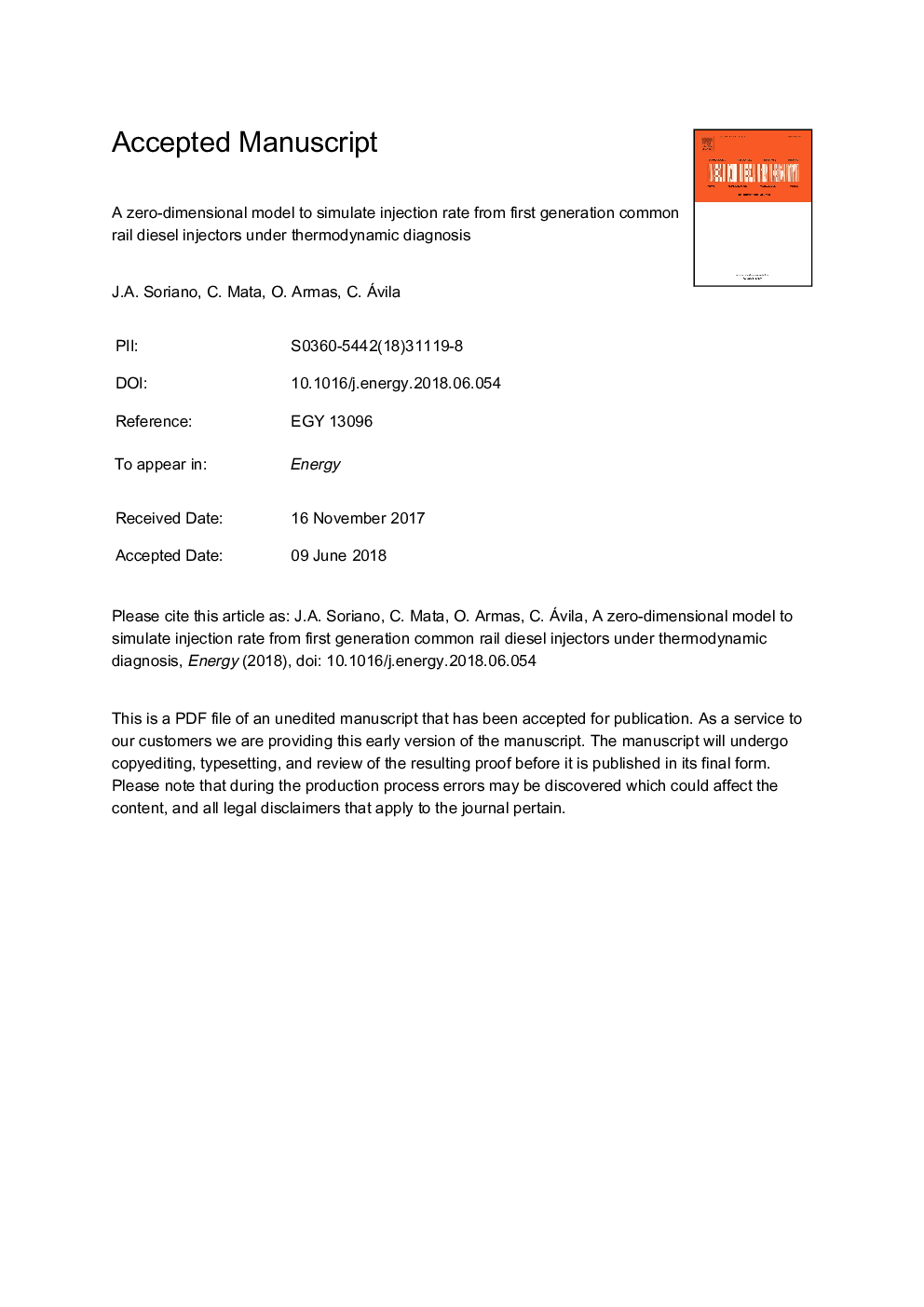| کد مقاله | کد نشریه | سال انتشار | مقاله انگلیسی | نسخه تمام متن |
|---|---|---|---|---|
| 8071191 | 1521392 | 2018 | 44 صفحه PDF | دانلود رایگان |
عنوان انگلیسی مقاله ISI
A zero-dimensional model to simulate injection rate from first generation common rail diesel injectors under thermodynamic diagnosis
ترجمه فارسی عنوان
یک مدل صفر به منظور شبیه سازی نرخ تزریق از انژکتور های دیزلی مشترک نسل اول تحت تشخیص ترمودینامیکی
دانلود مقاله + سفارش ترجمه
دانلود مقاله ISI انگلیسی
رایگان برای ایرانیان
کلمات کلیدی
ترجمه چکیده
منحنی نرخ تزریق یک پارامتر ورودی مهم در تشخیص ترمودینامیکی و در مدل های پیش بینی شده است و همچنین می تواند برای شبیه سازی اسپری های سوخت در شرایط عملیاتی مختلف استفاده شود. در این کار، یک مدل تزریق سوخت صفر با استفاده از داده های آزمایشی به دست آمده از یک سیستم تزریق مشترک با دو انژکتور سوار بر موتور ارائه شده است. مدل پیشنهاد شده یک ابزار مفید زمانی است که ابعاد داخلی مولد انژکتور ناشناخته است. مدل ارائه شده فقط نیاز به فشار تزریق، سیگنال انرژی پرشدن انژکتور، مجموع جرم سوخت در هر سکته مغزی، هندسه و تعداد سوراخ انژکتور سوخت و در نهایت برخی از خواص فیزیکی سوخت است. این مدل به دو تزریق انژکتور و دو نوع سوخت اعمال شده است. نتایج مقایسه ای بین میزان تزریق سوخت تجربی و مدل شده، با وجود سادگی اطلاعات مورد نیاز آزمایشی، نتایج عالی را نشان می دهد. اثرات معرفی نرخ تزریق سوخت مدل شده و اندازه گیری شده در یک ابزار تشخیصی ترمودینامیکی نشان داده شده است. این مدل پیشنهادی می تواند یک ابزار مفید، ساده و جایگزین برای برآورد میزان تزریق بدون نیاز به انجام آزمون میزان تزریق باشد.
موضوعات مرتبط
مهندسی و علوم پایه
مهندسی انرژی
انرژی (عمومی)
چکیده انگلیسی
The injection rate curve is an important input parameter in the thermodynamic diagnosis and in the predictive models, and it can also be used to simulate fuel sprays under different operating conditions. In this work, a zero-dimensional fuel injection rate model is proposed from experimental data obtained from a common-rail injection system with two solenoid-operated injectors. The model proposed is a useful tool when the internal component's dimensions of the injector are unknown. The presented model only requires the injection pressure, the injector energization signal, the total fuel mass consumed per stroke, the geometry and the holes number of the fuel injector and, finally, some physical properties of fuel. The model has been applied to two different solenoid-operated injectors and two fuels. The comparative results between the experimental and the modelled fuel injection rate show excellent results despite the simplicity of the experimental data requirements. The effects of the introduction of the modelled and measured fuel injection rate in a thermodynamic diagnostic tool are shown. This proposed model can be a useful, simple and alternative tool for estimating rates of injection without the need to carry out a test of the rate of injection.
ناشر
Database: Elsevier - ScienceDirect (ساینس دایرکت)
Journal: Energy - Volume 158, 1 September 2018, Pages 845-858
Journal: Energy - Volume 158, 1 September 2018, Pages 845-858
نویسندگان
J.A. Soriano, C. Mata, O. Armas, C. Ávila,
